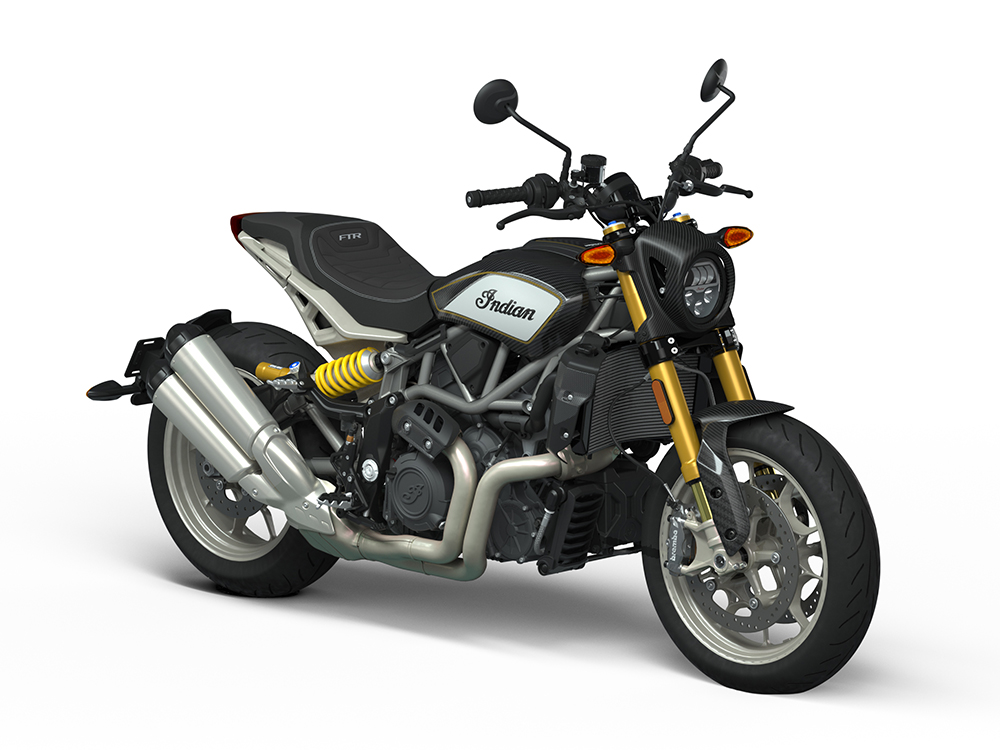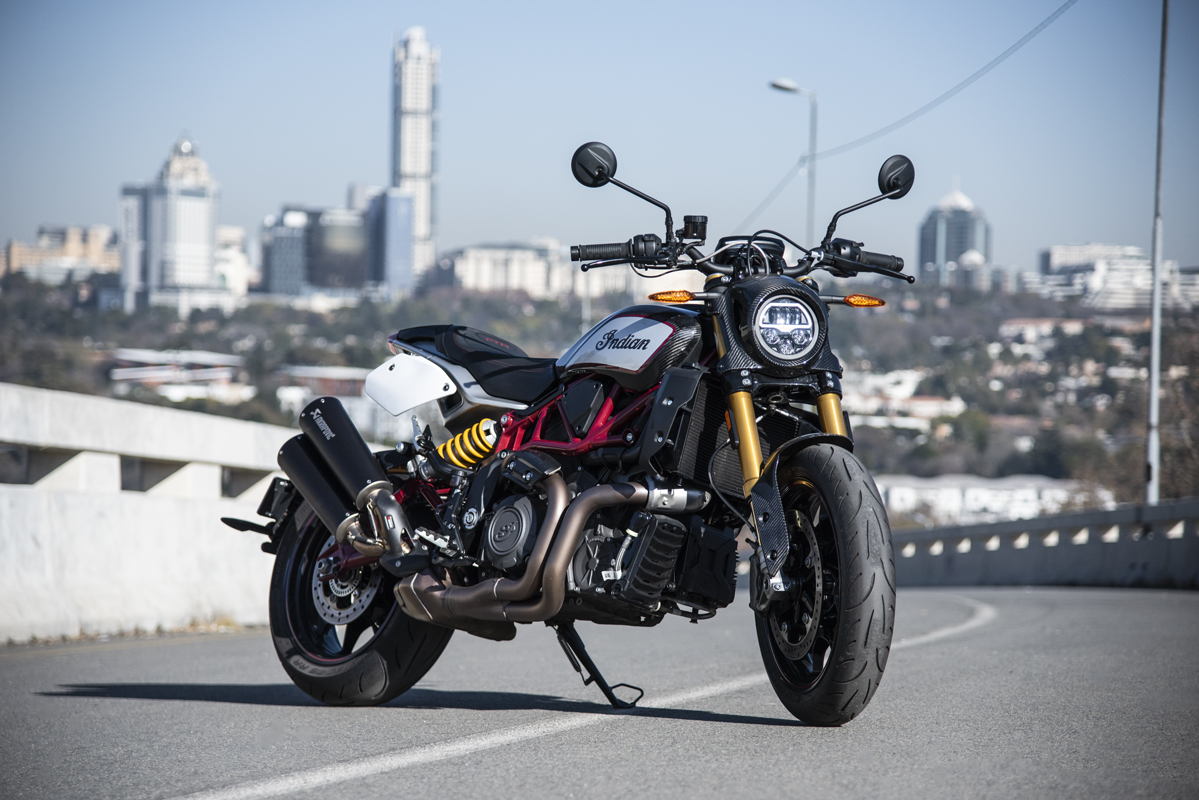
Recently I rode and wrote about the Yamaha XSR900, a bike that completely won me over. The beginning of that article saw me banging on about how every bike in any class is as good as the next one from a different manufacturer, just with different approaches to similar challenges.
If I thought that motorcycles were becoming a bit homogenised, all feeling the same and doing things in similar ways, then that notion was dispelled with the very next test bike, the Indian FTR 1200 R Carbon. Here is a bike that plays in the same space as the Yamaha and yet goes about its business in a completely different way.
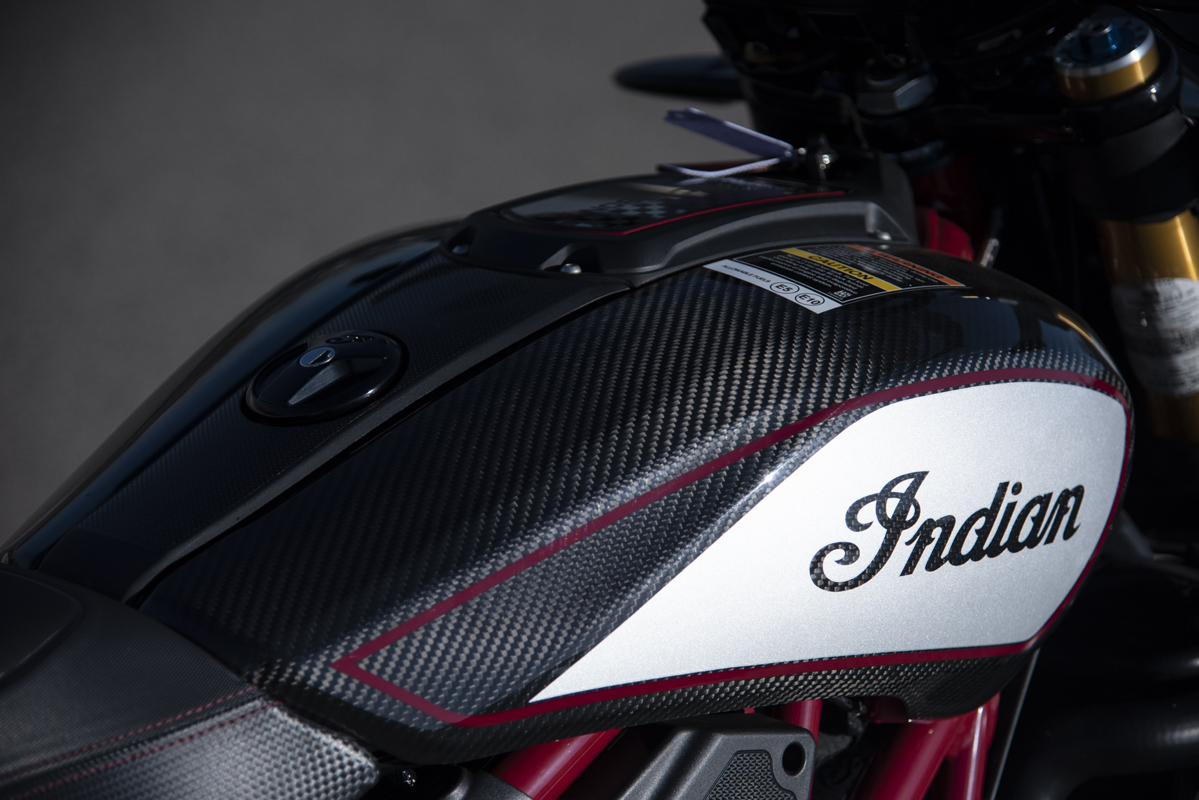
The Yamaha is a benign motorcycle: anyone can ride it and it will make them feel confident and skilful, from the moment you set off. That is the way of the Japanese motorcycle. It has become so easy to ride and all the idiosyncrasies have been ironed out. You don’t need to learn how to ride your Yamaha XSR900: you just do.
The Indian is old-school. You need to know it before you can ride it well. At first, it feels agricultural and just plain difficult to ride, especially after jumping off the Yamaha. But spend a bit of time with it and understand how it needs to be ridden and it all starts to make sense and I really appreciate that.
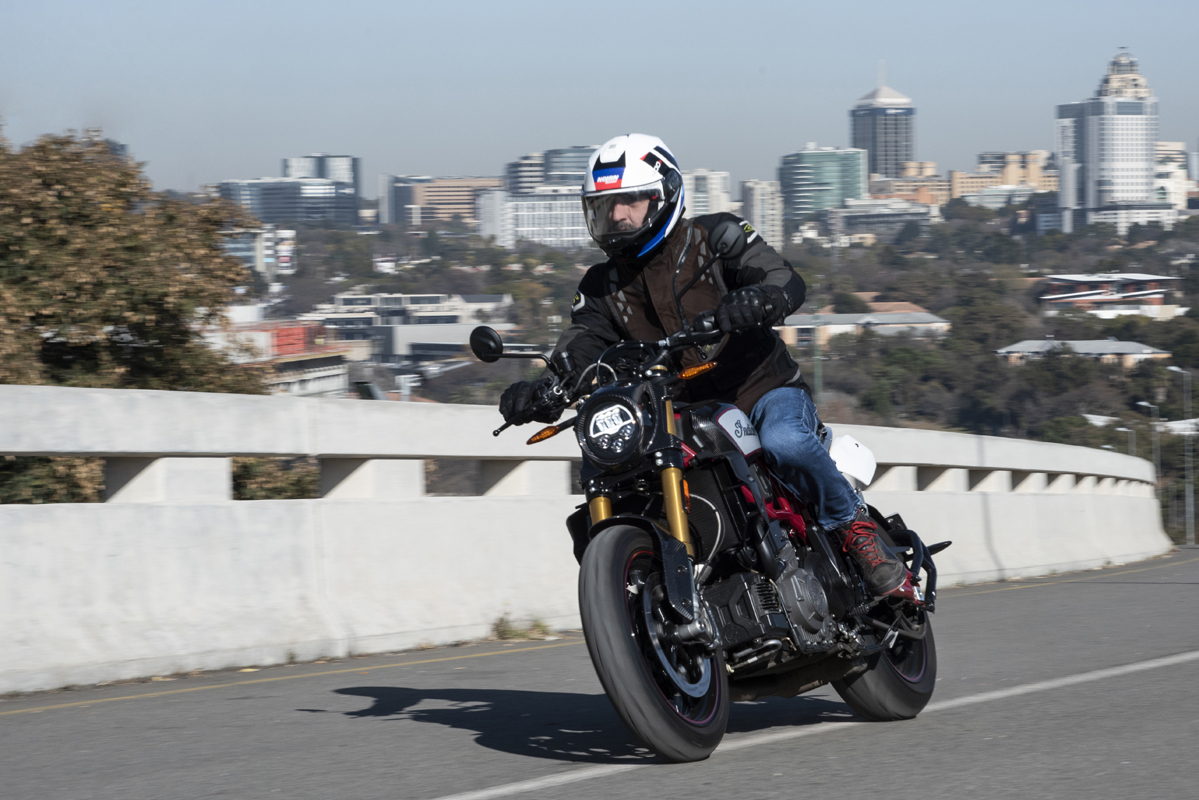
Motorcycle engineering has become so advanced that, apart from going as fast as you want, there is no challenge to riding a bike any more, especially if it’s from Japan or Europe. They are supremely efficient and capable.
The skill of riding – or, at least, one aspect of skill – has been diluted over the years. I had great fun riding a 1942 Harley-Davidson, with its foot clutch, hand gear change, advance/retard twistgrip on the left and throttle on the right and no brakes whatsoever – let alone suspension – and mastering the whole process of riding it well. Even a 1976 Triumph Bonneville needed more than its fair share of mechanical sympathy to ride and much of that has been lost. Of course, not everyone wants that but I do feel that we have all become a little soft and unwilling to make any effort to ride a bike. That is what the Indian gives: you have to work at it.
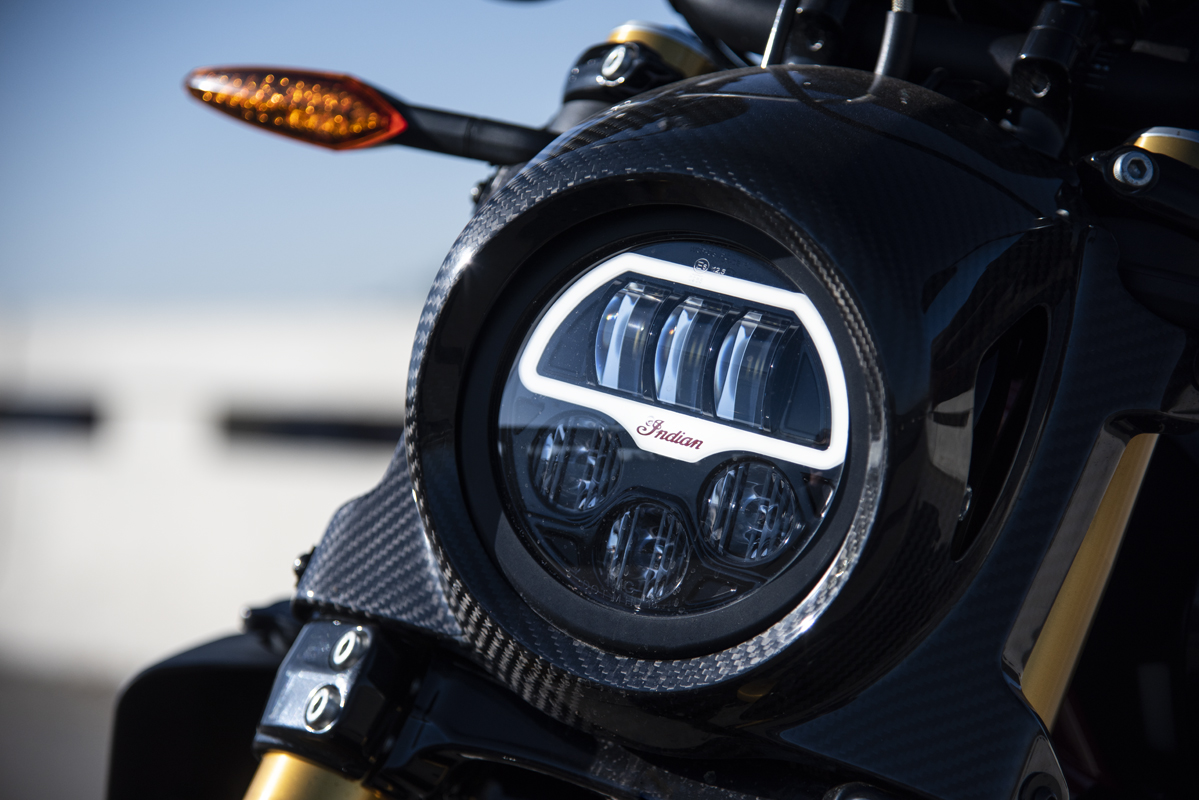
American motorcycles, without inferring that they are inferior, are just different; they need a certain level of confidence, partly because of their bulk and weight, but also because they are slightly under-engineered. I don’t mean that in a bad way, but your average Harley-Davidson or Indian cruiser is not engineered with ultimate riding dynamics in mind, just as the typical American car, at least from the 1940s onwards, up to the 1990s, was a softly-sprung barge of a vehicle in which comfort was deemed more important than chassis dynamics.
American motorcycles were built for the open road, with few bends – not the twisty European roads – and that is the way they have evolved, painstakingly slowly, to the point that only in the last twenty years have their road manners gotten better and better. But they are still behind the rest of the world and that is actually a benefit: they’re not homogenised and all have a distinct character that you need to understand before you can ride them well.
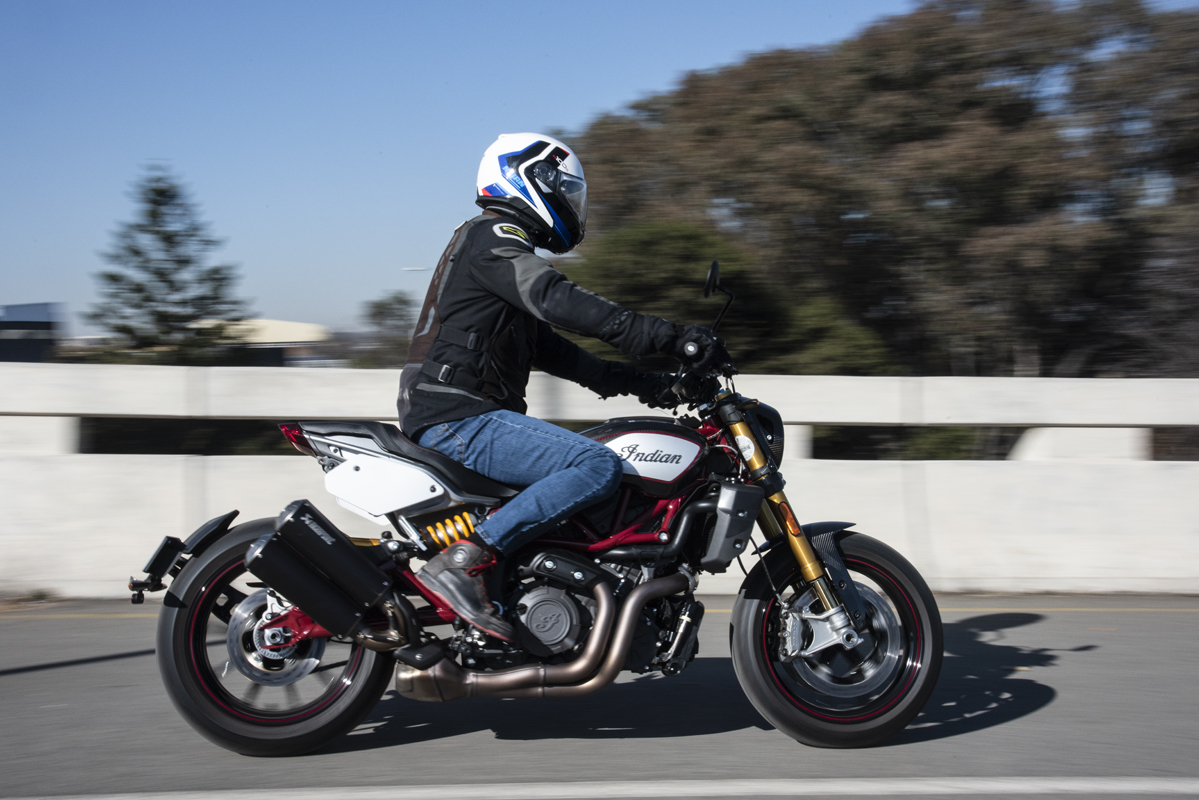
I’m not alone: writing in Motorcycle News, Michael Neeves had the following to say about the previous FTR 1200 S: “Indian have created a beautiful, but gnarly flat track-inspired street hooligan that’s not for the faint-hearted or inexperienced. It’s a character trait deliberately built in to make the Indian FTR 1200 S stand out from the crowd and few modern machines offer the same drama or challenge to the rider.” He goes on to say that it makes other retro bikes “seem soft and fluffy by comparison.”
It’s a viewpoint borne out by the statistics. Where the Yamaha weighs in at 193kg, the Indian tips the scales at 236kg. Make no mistake, this is a heavy bike but it suits the character and doesn’t blunt the performance too much or the riding experience.
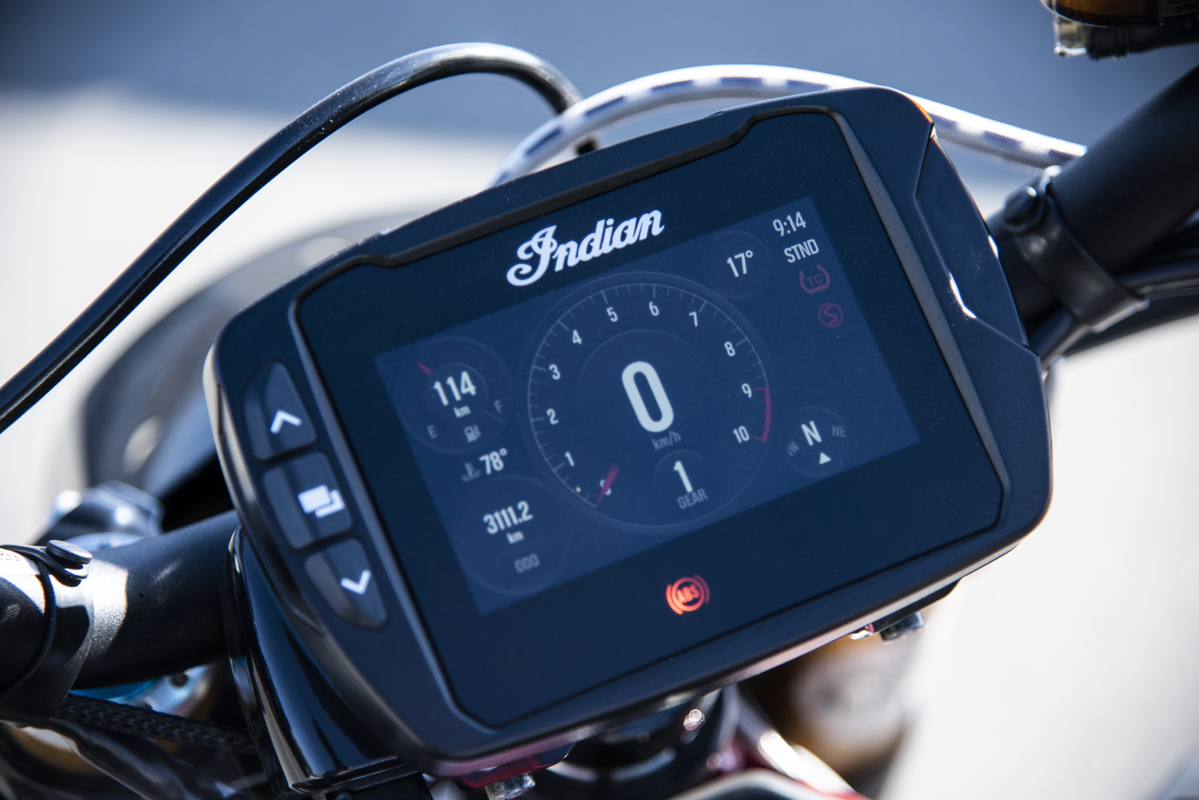
Of course, the FTR 1200 isn’t a new model, but a 2021 update gave it a bit more power and, more importantly, changed the wheel sizes on some models to much more road tyre-friendly 17-inch front and rear.
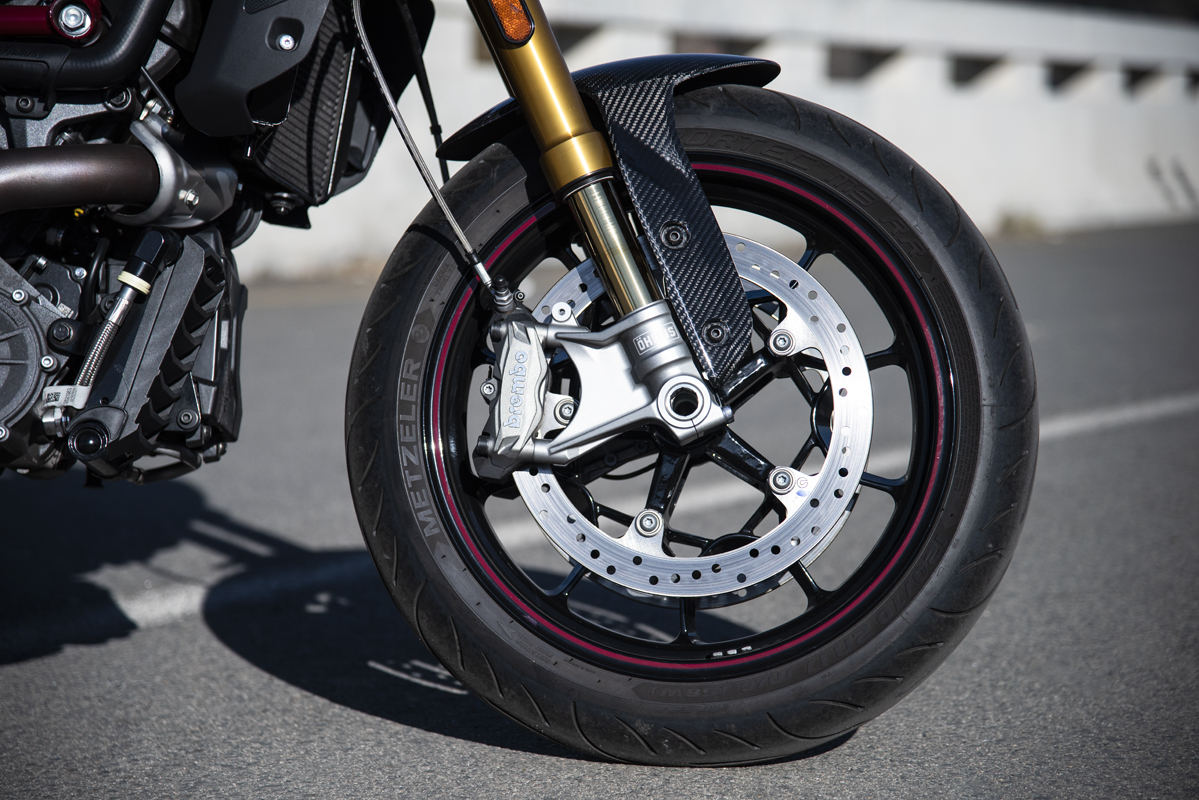
What this means is saying goodbye to the flat-track-style Dunlop tyres with their limited grip for Metzeler Sportec hoops which have an abundance of grip and, with adjustments to steering geometry and suspension settings, the handling has come into line with all the Indian’s naked sports bike rivals, even if the long wheelbase means it turns a bit slower and requires more effort to turn it. Once it’s leaned into a bend, however, it is rock solid and stable.
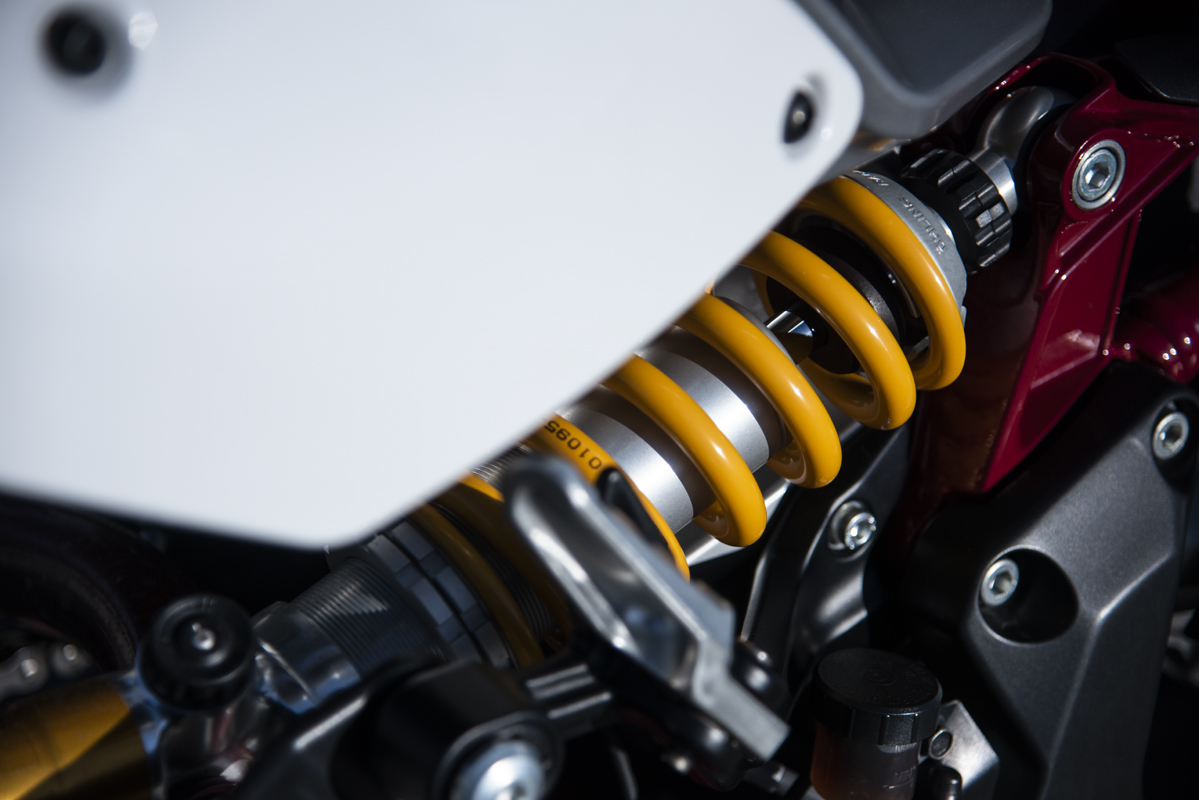
The smaller wheels also mean a 6cm-lower seat height which, with 40mm narrower handlebars, give an overall effect of increased confidence and comfort.
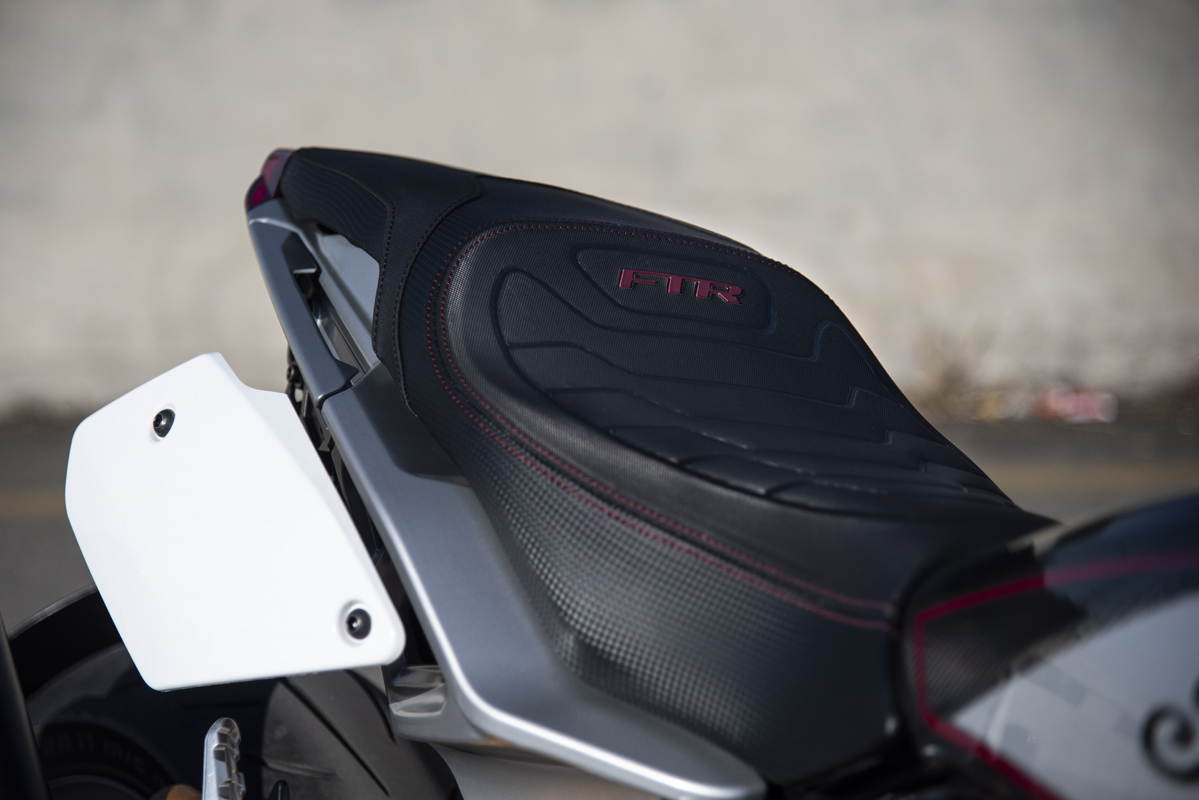
There has always been some confusion about the engine, many people believing it is the 1133cc V-Twin found in the Scout: It’s not, although the engine in the FTR 1200 is based heavily on it, having been developed in conjunction with race engine specialists Swissauto. Now at 1203cc and with high compression heads, 121bhp is available, compared to the 100bhp of the Scout. The engine is equipped with rear-cylinder deactivation software, which shuts off the rear cylinder when idling, so prevent heat build-up and save a bit of fuel which is important as this is a thirsty engine: with a thirteen-litre tank you’ll be lucky to get 200km range. As this isn’t a bike on which to travel long distances, that’s not a problem, although any Sunday morning blast will need a bit of forethought if you’re to get home at full speed and not suffer from range anxiety.
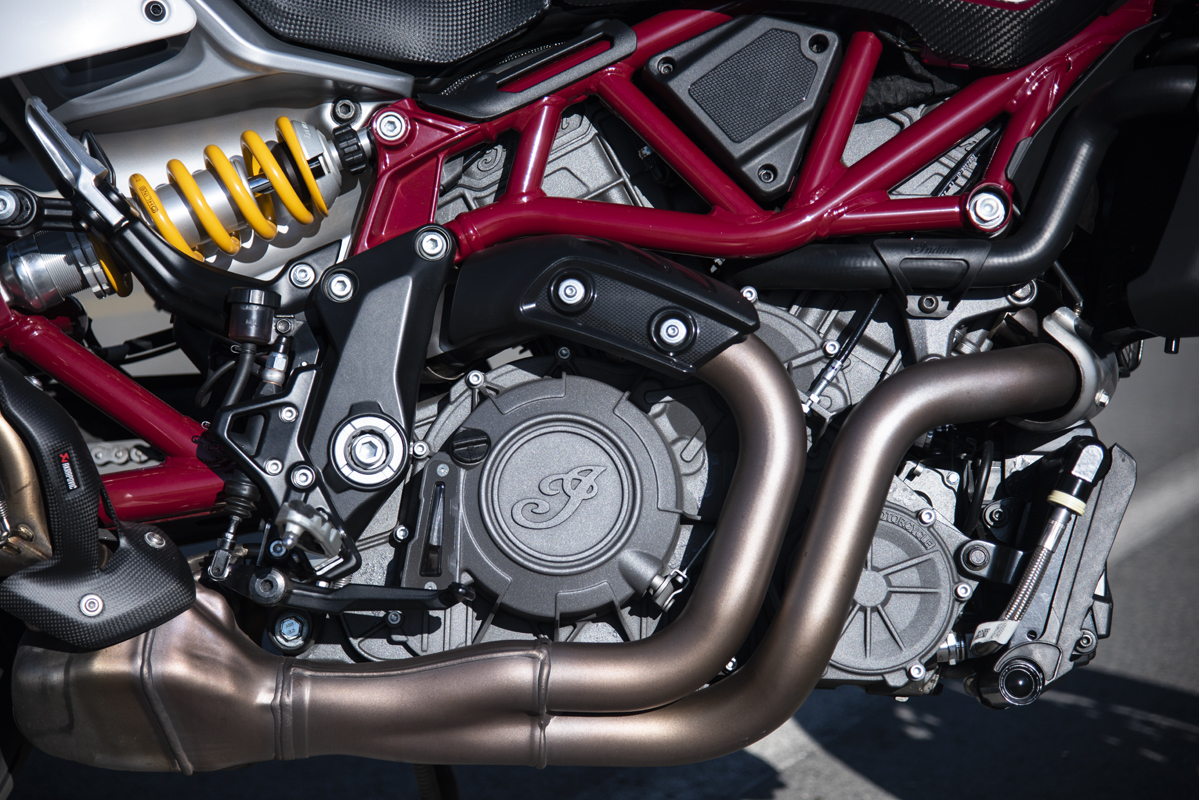
We tested the FTR 1200 R Carbon version, which means you get a full Akrapovic exhaust system and top-spec Ohlins and Brembo equipment, along with lashings of carbon fibre.
The full-house version retails for R405,000 (or R395,000 for the FTR 1200 Championship Edition and R355,000 for the FTR 1200 – the base model): so there’s 3 different flavours to suit your unique taste.
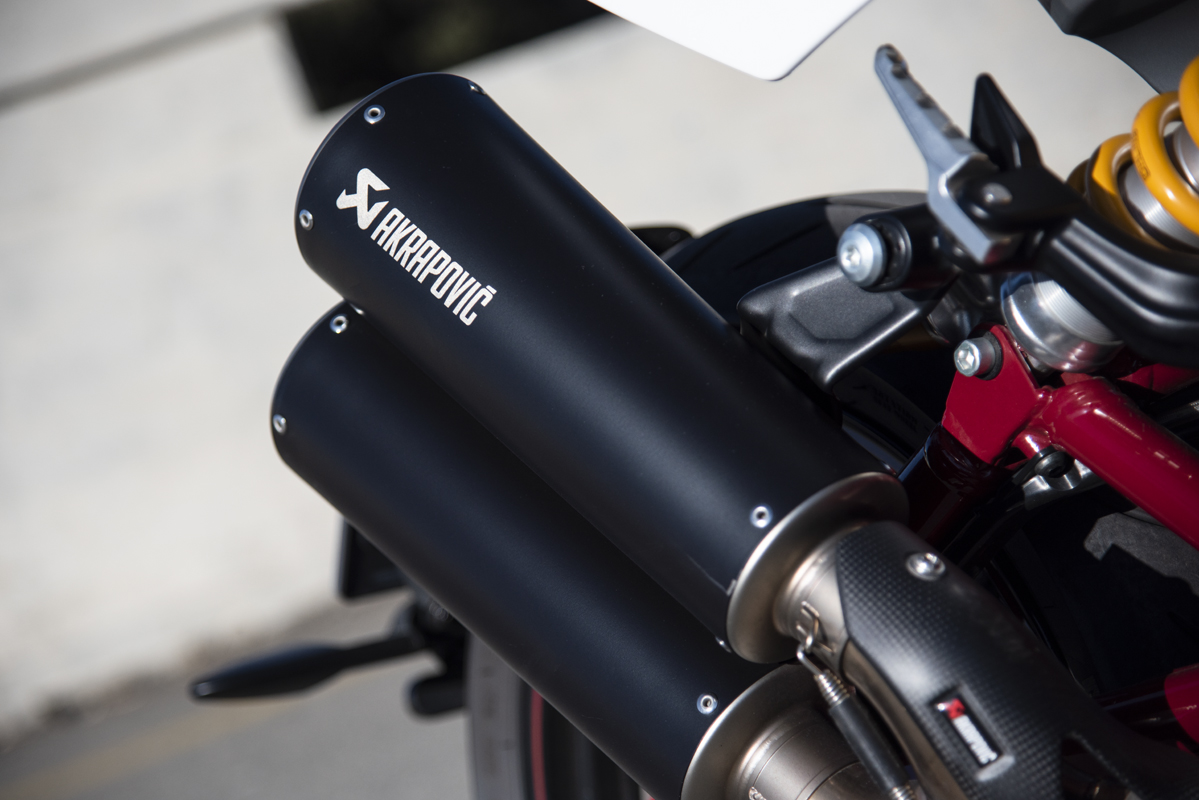
That, in a nutshell, is the Indian FTR 1200 R Carbon. Something really different and challenging. If you’re up to the challenge, then it really makes sense.
I’ll tell you what, I challenge you to go and ride one for yourself, and discover its personality and foibles – and plus points! I’d wager that you’d enjoy the ‘raw’ nature of the FTR 1200 R as much as I did…
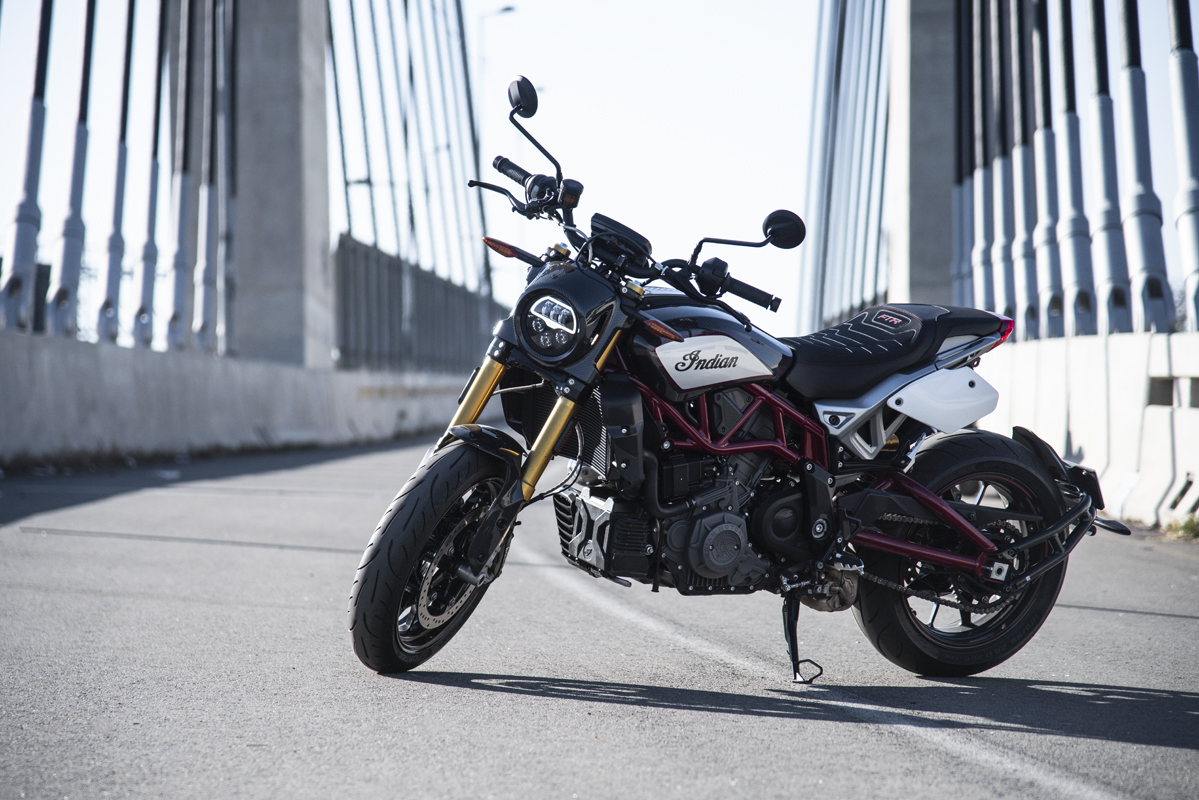
Indian FTR 1200 R Carbon Edition
For more information on the bike featured in this article, click on the link below…




